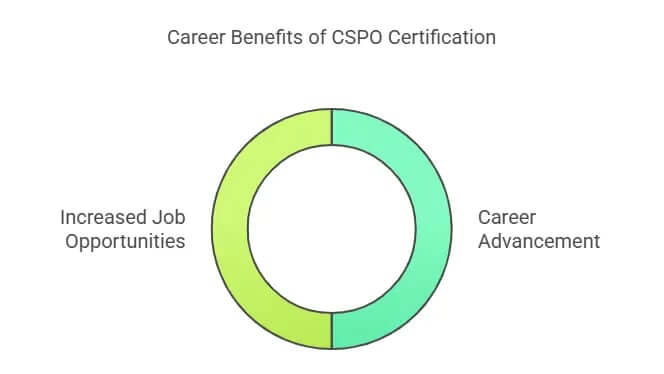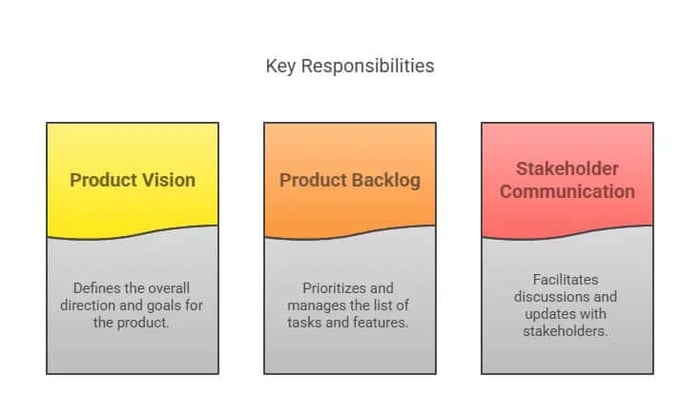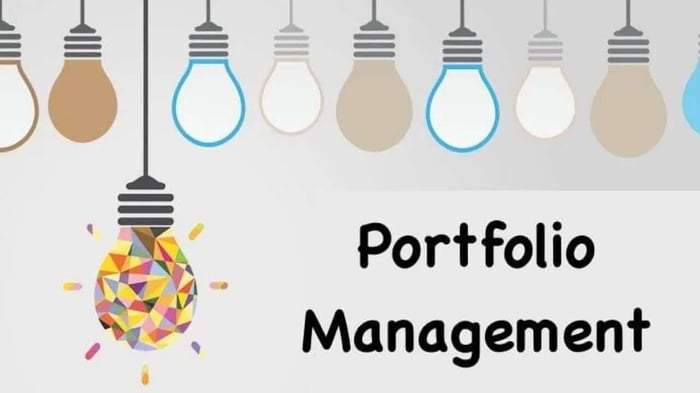Table of Contents
- What is the Certified Scrum Product Owner (CSPO) Certification? 🤔
- How the CSPO Certification Boosts Your Career? 🚀
- How to Obtain the CSPO Certification? 📚
- CSPO vs Other Agile Certifications: What’s the Difference? 📊
- Key Responsibilities of a Scrum Product Owner 📋
- 10 Lesser-Known Facts about CSPO 🌟
- Final Thoughts 🧠
Have you ever wanted to wear a superhero cape in the world of project management? Well, the Certified Scrum Product Owner (CSPO) Certification might just be your ticket to joining the league of extraordinary product owners. It’s like unlocking a secret level in the video game of project management, but instead of a new weapon, you gain the power to maximize product value and lead your team to victory. With this certification, you're not just managing products; you're crafting the future! 💡
So, what’s all the hype about? If you're wondering whether the CSPO certification is worth the hassle, you’ve come to the right place. We’ll dive into why it’s a game-changer, how you can obtain it, and why it's the perfect career boost for those ready to take on bigger, bolder projects. By the end of this post, you’ll have all the tools and knowledge to make an informed decision on becoming a CSPO-certified professional. 🚀

What is the Certified Scrum Product Owner (CSPO) Certification? 🤔
The Certified Scrum Product Owner (CSPO) Certification focuses specifically on the role of the Product Owner within the Scrum framework. Scrum is a widely used agile methodology that helps teams work in iterations, delivering value incrementally.
As a CSPO, you are expected to maintain the product backlog, prioritize tasks, and act as the main liaison between the business stakeholders and the development team, ensuring that the product delivers maximum value to customers.
Understanding the CSPO
In the fast-paced world of project management, especially in agile environments, the role of the Scrum Product Owner (PO) is crucial. As the CSPO certification suggests, this role involves taking ownership of the product vision, maximizing product value, and ensuring the development team builds the right product. But what does this mean in practice?
A CSPO is a professional who is responsible for defining the product features, prioritizing them, and ensuring that the development team has the right insights and requirements to deliver successfully. The certification helps professionals gain in-depth knowledge of Scrum principles and practices, specifically focusing on the product owner’s responsibilities.
How does CSPO Work with Scrum?
Scrum is an agile framework used to manage and complete complex projects. It is based on the idea that the best way to build a product is to break the work down into manageable chunks and iterate frequently, gathering feedback at each stage. The CSPO focuses on ensuring that these iterations align with customer needs and business goals, thus maximizing the product's value. 🛠️
Why Should You Consider CSPO?
If you’re looking to improve your career prospects, expand your role in product development, or take on more leadership responsibilities, this certification is the key to success. With agile methodologies being adopted by industries worldwide, becoming a CSPO puts you at the forefront of an in-demand career path. Let’s dive deeper into how this certification can help you stand out.
If you're looking to dive deeper into the role of a Scrum Master, check out our Certified Scrum Master Certification Guide for more insights into the fundamentals and best practices.
How the CSPO Certification Boosts Your Career? 🚀
The CSPO certification can significantly impact your career trajectory, particularly if you’re aiming for leadership roles in product development and agile environments. With this credential, you demonstrate that you have mastered the art of prioritization, backlog management, and aligning product strategy with business outcomes.
As agile methodologies become more widely adopted across industries, your CSPO certification increases your value to employers, opening doors to roles like Product Owner, Product Manager, and even higher-level positions such as Chief Product Officer.

Career Advancement for Product Owners
With the Certified Scrum Product Owner (CSPO) Certification, you're not just adding a credential to your resume—you’re demonstrating your expertise in managing products in an agile environment. This can open the door to more senior positions, increase your earning potential, and give you a competitive edge in the job market.
In fact, according to Scrum Alliance, CSPO-certified professionals often see an increase in salary and promotions, thanks to the high demand for agile skills in the tech and business sectors. With businesses transitioning to agile frameworks, your expertise will be highly sought after!
Increased Job Opportunities
CSPO certification also gives you access to a wider array of job opportunities. Many companies are now looking for certified professionals who can seamlessly integrate into their agile teams and drive product development with a strategic mindset. The CSPO equips you to handle the complex requirements of product ownership, ensuring that businesses remain competitive and agile.
How to Obtain the CSPO Certification? 📚
Obtaining the CSPO certification is a straightforward process, but it requires a commitment to learning and participating in an official Scrum training program.
You can register for a CSPO training course through Scrum Alliance or other recognized training providers. These courses typically last 2-3 days and provide an in-depth understanding of Scrum principles and the critical responsibilities of a Product Owner.

Eligibility Criteria
The CSPO certification is designed for professionals with some background in agile or Scrum environments. Here’s a basic checklist of what you need:
Experience in Agile Practices: While there are no strict prerequisites, having prior experience or understanding of Scrum principles can help you grasp the concepts faster.
Scrum Training: You must attend a Certified Scrum Product Owner (CSPO) course from a recognized provider like Scrum Alliance or similar. This is a hands-on training program that provides a deep dive into the Scrum framework and product ownership.
Steps to Becoming a Certified Scrum Product Owner
Step 1: Register for a CSPO Training Course
The first step is to sign up for an official CSPO course. The training is often 2-3 days long and led by Scrum experts. You’ll learn about Scrum practices, the role of the Product Owner, backlog management, prioritization, and more.
Step 2: Participate in the Course
The course includes lectures, workshops, and practical exercises designed to immerse you in real-world scenarios. During this phase, you’ll get hands-on experience, understand the Product Owner role better, and learn techniques to optimize product value.
Step 3: Obtain Certification
After completing the course, you’ll receive your CSPO certification. This does not involve a formal exam; the course itself acts as the qualification.
Step 4: Join the Scrum Community
Once certified, you can become a part of the global Scrum community. This gives you networking opportunities with other professionals and continuous learning resources.
CSPO vs Other Agile Certifications: What’s the Difference? 📊
While other agile certifications, such as the Certified Scrum Master (CSM) or Certified Agile Project Manager (CAPM), focus on different aspects of agile frameworks, the CSPO is unique in its emphasis on product ownership and maximizing value from the product perspective.
The CSM primarily focuses on facilitating Scrum processes and ensuring that teams follow agile principles, while the CSPO dives deep into managing the product backlog and aligning the product roadmap with strategic goals.
CSPO vs PMP vs Scrum Master
While CSPO is specific to product ownership in agile environments, certifications like PMP (Project Management Professional) or Scrum Master (CSM) focus more on project management and team facilitation, respectively. Here’s a comparison to help you understand:
Certification | Focus Area | Ideal Candidates |
CSPO | Product ownership, agile value maximization | Product Owners, Business Analysts |
PMP | Project management, overall delivery | Senior project managers, leaders |
CSM | Scrum team facilitation, managing Scrum processes | Scrum Masters, Agile Coaches |
The CSPO certification is particularly useful if you're interested in driving the product vision, owning the product backlog, and ensuring that customer value is maximized. If you’re a Scrum Master, PMP, or Product Manager, adding a CSPO to your credentials will help refine your skill set for managing products in agile teams.
Key Responsibilities of a Scrum Product Owner 📋
A Scrum Product Owner (PO) holds a pivotal role in ensuring that the product team delivers value at every sprint.
One of their primary responsibilities is managing the product backlog, which includes prioritizing features based on their business value.
The PO is also responsible for collaborating with stakeholders, gathering requirements, and ensuring that the team has a clear understanding of the product vision and goals.

Defining the Product Vision
A CSPO is responsible for setting the product vision—defining what success looks like and guiding the team toward that outcome. The product vision informs the roadmap and ensures that the development team understands the end goal.
Managing the Product Backlog
The Product Owner works closely with stakeholders to gather requirements, prioritize features, and ensure that the product backlog is continuously updated. The backlog should reflect the most critical and high-value items first.
Stakeholder Communication
The CSPO serves as the bridge between the stakeholders and the Scrum team. Clear communication is key to ensuring that the development team understands the requirements and that stakeholders' expectations are aligned with the team’s progress.
10 Lesser-Known Facts about CSPO 🌟
CSPO Certification is Globally Recognized: Scrum is used by top companies worldwide, making CSPO a universally respected certification. Scrum Alliance.
No Exam Required: Unlike many other certifications, CSPO does not require an exam. Your training is the qualification. Scrum Training Series.
CSPO Can Lead to Higher Earnings: Certified professionals often experience a significant increase in salary after obtaining the CSPO. Agile Alliance.
CSPO Certification Expiry: The CSPO certification is valid for two years and requires ongoing education to maintain.
CSPO is Not Just for Tech: While commonly associated with tech, CSPO is useful in various industries, including healthcare, finance, and more.
Scrum Alliance Offers Continuous Learning: As a CSPO, you have access to various continuous learning resources and events hosted by the Scrum Alliance.
CSPO Can Be Combined with Other Certifications: Many professionals combine CSPO with other certifications like PMP or CSM to broaden their skill set.
CSPO is Essential for the Scaled Agile Framework (SAFe): For larger teams working in scaled agile environments, CSPO is a foundational certification.
CSPO Helps Teams Work More Effectively: Certified Scrum Product Owners can help teams work with clearer priorities and more cohesive communication.
There Are No Formal Prerequisites for CSPO: You don’t need any prior certifications or experiences to take the CSPO course.
Final Thoughts 🧠
The Certified Scrum Product Owner (CSPO) Certification is one of the best ways to level up your career in agile project management. It equips you with the tools and strategies to manage products that deliver value, align with business goals, and satisfy customer needs. By becoming a CSPO, you’re stepping into a world of opportunities where product ownership and leadership are highly valued.
Ready to take the next step in your career? Explore APMIC for the best project management certifications and start mastering agile techniques to achieve your career goals today!





